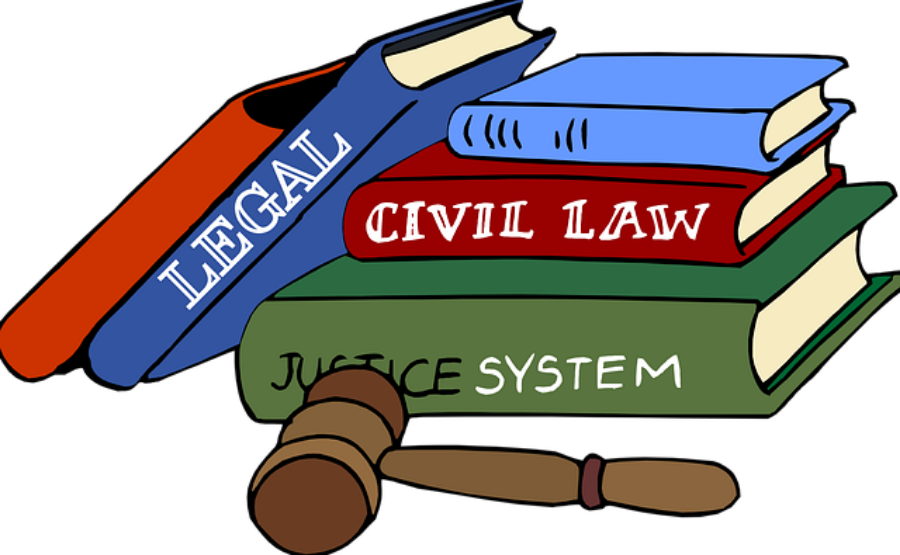Blog
The ever-increasing reliance of content producers on artificial intelligence apps to generate content for online use begs the question of what legal obligations and liability risks arise from the use of that content.
The statutory and regulatory requirements governing the use of AI to generate online content varies widely by jurisdiction. While there is no universal set of laws, certain general legal principles apply across the spectrum.
1. Copyright and Intellectual Property Rights
When an AI bot generates content, the first questions that arise are: “Where did it obtain this content? Is it original or was it derived from an existing source? If it is derivative, who holds the copyright to that material? Who should be credited as the author?”
Is the “author” the AI bot, the human who programmed or trained it, the human who provided the input data, or the human who edited or published the output? Different jurisdictions may have different criteria for determining authorship and ownership of AI-generated works, and some may not recognize AI as a legal entity or a “creator” at all.
It is important to determine whether the AI is creating “original work” or if the content is derivative of existing copyrighted material. Additionally, the use of AI to replicate copyrighted content without permission may infringe on the copyright holder’s rights.
AI-generated content may fall under the doctrine of fair use or transformative use, which allows the use of copyrighted material for purposes such as criticism, comment, news reporting, teaching, scholarship, or research. However, this is not a clear-cut rule and depends on factors such as the purpose and character of the use, the nature of the original work, the amount and substantive nature of the portion used, and the effect of that use on the potential market.
2. Liability and Accountability
AI-generated content may also entail legal risks and responsibilities for the parties involved in its creation and distribution. For example, who is liable if the AI-generated content infringes on someone’s rights, causes harm, or violates laws or regulations? How can the AI bot be held accountable for its actions and decisions? How can the human users or beneficiaries of the AI-generated content ensure its quality, accuracy, and reliability?
3. Privacy and Data Protection
AI-generated content may involve the use of personal data, such as names, images, or biographical information, to create realistic or personalized content. This could violate any number of privacy and data protection laws that regulate how personal data can be collected, processed, and shared online.
If the AI uses personal data to generate content, it must comply with data protection laws such as the General Data Protection Regulation (GDPR) in the European Union, the California Consumer Privacy Act (CCPA), the Personal Information Protection and Electronic Documents Act (PIPEDA) of Canada, and other similar regulations. These laws require obtaining consent from individuals before processing their personal data and ensuring the protection of that data.
4. Transparency and Disclosure
Depending on the jurisdiction, there may be requirements to disclose to your site visitors that content has been generated by AI, especially in cases where the content might be mistaken for human-generated content. This is particularly relevant in advertising, news articles, and other media where trust and authenticity are important.
AI-generated content may pose ethical challenges, such as opportunities to mislead or deceive the audience, harm the reputation or dignity of individuals, or undermine the credibility or diversity of information sources. From an ethical standpoint, it is important for content developers to disclose the use of AI to generate content and provide clear and accurate information about the source, purpose, and quality of the content. It’s also important to avoid creating content that is harmful, offensive, or discriminatory.
5. Consumer Protection Laws
AI-generated content must not mislead consumers. This falls under broader consumer protection laws that prohibit deceptive practices. Content that is designed to deceive or mislead users may result in legal action and penalties.
6. Liability for Harmful Content
If AI-generated content is defamatory, discriminatory, or otherwise harmful, there may be legal consequences. The entity responsible for the AI may be held liable for the content it produces, depending on the legal framework governing speech and publication in the relevant jurisdiction.
7. Accessibility
Laws such as the Americans with Disabilities Act (ADA) in the United States may require that online content, including AI-generated content, be accessible to individuals with disabilities. This includes ensuring that content is compatible with screen readers and other assistive technologies.
8. Platform-Specific Rules
Online platforms (such as X, Facebook, Instagram, etc.) have their own terms of service and/or community guidelines that govern the use of AI to generate content. These rules may go beyond legal requirements and can result in content being removed or accounts being banned for non-compliance.
9. Export Controls and Sanctions
In some cases, AI technologies are subject to export control laws and sanctions, guidelines and requirements for disclosing AI generated content.
TAKEAWAYS
Full Disclosure. Always disclose which content is AI-generated and clearly label it as such. This can be done through disclaimers or specific mentions within the content that it was generated or assisted by AI.
Quality Assurance. Regardless of whether content is AI-generated or human-written, the focus should always be on producing high-quality, original content that provides value to the audience.
Compliance with Laws and Regulations. The very nature of the worldwide web means that content on your website is accessible anywhere in the world. Be aware of any legal requirements or industry standards – both within your own jurisdiction and globally - that may apply to AI-generated content, and ensure that your content is compliant.
Image by Gerd Altmann from Pixabay
Image courtesy Pixabay.Com. Content partially researched using Microsoft Copilot AI.
I just renewed my Canadian passport, and one of the questions on the renewal form was "Are you a naturalized Canadian?" Which started me wondering about what a "naturalized Canadian" is, and what the difference is between naturalization and Canadian citizenship.
Those of us who are lucky enough to have been born and raised in Canada get to enjoy all the rights, privileges and benefits of being citizens of this wonderful country. I believe that I live in the best country in the world. And apparently so do the quarter million new immigrants who arrive in Canada each year.
A naturalized Canadian is someone who has obtained citizenship by means other than being born in Canada or being born to or adopted by Canadian citizens. In other words, a naturalized Canadian is a person who became a permanent resident and then applied for and was granted full citizenship.
What rights does a permanent resident have (or not have)?
- Permanent residents are eligible for health care and most other social benefits, they can live and work anywhere in Canada, and they are protected by Canadian laws and the Canadian Charter of Rights and Freedoms just as any Canadian citizen would be.
- As a Canadian citizen, I have the right to vote. Permanent residents cannot vote, and they can't run for public office.
- I would not lose my citizenship if (heaven forbid) I was convicted of a criminal offence, but if I was a permanent resident, I might be deported for criminal activity. Which is not a bad thing. Too bad we can't deport a few of our more notorious Canadian criminals!
- Permanent residents also cannot hold Canadian passports. They must have a passport from their country of origin in order to travel, but they must attach official documentation showing that they have permanent resident status in order to get back into Canada.
How does an immigrant become a naturalized Canadian?
- First of all, you must have acquired permanent resident status and you must be at least 18 years of age.
- You must have lived in Canada for at least 3 years.
- You must be able to speak and understand English or French.
- You must have an understanding of Canadian government, history, geography and what the rights and responsibilities of Canadian citizenship are.
- You must pass the citizenship test. The federal government will supply you with a guide that you can study in preparation for the test.
- Once you've passed the test, you then are ready to take the oath of citizenship.
Who does not qualify for Canadian citizenship?
- Anyone who has been convicted of a criminal offence or an offence under the Citizenship Act in the 3 years prior to their citizenship application.
- Anyone who is in prison, on parole or probation, or who has been in prison, on parole or probation for a period of more than 1 year at any time in the past four years.
- Anyone who has a deportation order against them.
- Anyone who has been charged with or convicted of a war crime or a crime against humanity.
- Anyone who has had their citizenship revoked within the past 5 years.
Image by jacqueline macou from Pixabay
What is an indemnity bond?
An indemnity bond (also called a surety bond or fidelity bond) is a form of insurance purchased by one party to a contract as a means of compensating a second party to the contract, should the first party fail to deliver on its promises or perform its obligations. The bond is guaranteed by a third party (usually a bank) which agrees to pay the second party if the first party defaults.
Under what circumstances would an indemnity bond be used?
There are many scenarios in which an indemnity bond might be required by one or more of the parties to a transaction. For instance, bid bonds are commonly used in situations where projects are offered through a bidding process.
Bid bonds ensure that the successful bidder follows through on the promises set out in its bid. Payment bonds are used extensively in construction projects to guarantee that the general contractor pays all of its subtrades and suppliers, to protect the project owner against exposure to lien claims.
An indemnity bond could be used to avoid double payment by a company redeeming its shares in the event of a lost share certificate, or to indemnify a freight carrier for delivery of a shipment of goods if the bill of lading is lost.
Is an indemnity bond the same as a personal guarantee?
No - these are two different types of obligations. A guarantee (or guaranty) is a promise to pay the indebtedness of a corporation or business if it becomes unable to meet its financial obligations, up to the full amount of the debt. An indemnity is a promise to protect the indemnified party against any losses it may suffer in connection with the transaction, without limit.
Do I have to get a lawyer to prepare the bond?
No, you can purchase a bond from any financial institution or insurance company. But you should review it with your lawyer so that he/she can explain exactly what the legal implications are.
Image by Dimitris Vetsikas from Pixabay
Are you thinking of starting a home business? Do you know whether you can do so legally in the neighborhood you live in? Before you invest a lot of money in inventory, supplies and equipment, make sure that your ability to operate your business will not be impacted by zoning laws, bylaws, or restrictions imposed by the local Home Owners Association. If you live in a condo, or if you rent, there may be further limitations imposed by the condominium association or by your lease.
Learn to Draft Your Own Contracts
If your business hires outside consultants, it's worth your while to learn how a consulting contract is structured. And if you're a consultant yourself, you'll want to know how to prepare your own agreements with clients to cut down on your legal fees.
While people often assume you need to have an attorney draw up your contracts, if you acquaint yourself with the various provisions that are included as standard elements in a consulting agreement, you should be able to confidently draft your own contracts.
The terms of the contract should be discussed and agreed to verbally first, before putting it in writing. It might be a good idea to prepare a Letter of Intent first, to make sure that both parties are on the same page before you enter into a formal written agreement.
The Elements of a Consulting Agreement
- The Preamble. On the first page you will set out the full legal names and a brief description of each party, and a summary of the parties' intents and the purpose of the contract.
- Services to be Provided or Excluded. Fully describe the scope of the services that the consultant will provide, either in the main body of the contract or in an attached schedule. If certain services are specifically not included, these exceptions should be clearly set out. All deliverables, completion dates and deadlines should be listed.
- Employees and Contractors. If more than one person will be providing consulting services, identify them and how they are related, i.e. which ones are employees and which ones are independent contractors retained by the consultant to assist with the project. It may be helpful to include an organizational chart with each person's name, position and job description, and the reporting hierarchy. Each of these persons should agree in writing to be bound by the terms of the Consulting Contract.
- Qualifications. The consultant's qualifications should be described, or if the parties prefer, the consultant can make representations to the effect that he/she is fully qualified to provide the services.
- Term and Renewal. Define what the term of the agreement will be. If it is project-specific, clarify the circumstances that define completion of the project.
- Is the contract ongoing and open-ended?
- Is it a project-specific contract that will end when the project is completed?
- Is it a one-year arrangement?
- If there is a renewal option, does it renew automatically or will the parties negotiate a new contract before the old one expires?
- Contract Price. The contract price should be clearly set out. You also need to be very clear about:
- The amounts of periodic payments and the dates on which they are due. If payments are tied to the completion of certain milestones, those milestones need to be clearly defined.
- The method of billing by the consultant (weekly, monthly, etc. or whether invoicing will be done periodically as milestones are accomplished).
- The method of payment by the customer. State if payment is net 30 after the date of the invoice or within a specified number of days after a deliverable is delivered or a milestone is reached.
- Invoices. If an invoice is required to initiate the payment cycle, it's advisable to include a description of the invoice format or attach a sample invoice as a schedule.
- Approval Process. Describe the procedure for approval and acceptance of each phase or deliverable, as well as the procedure for revisions if any are required.
- Contract Extras. Describe how changes or additional services can be requested by the customer, the additional amount that must be paid for those extras, and when and how it must be paid.
- Currency. Be clear on what currency is the basis for the amounts quoted by including a paragraph like this one: "All amounts required to be paid under or in connection with this Agreement shall be paid in lawful money of ___________ (name of country)."
- Expenses. Detail which expenses will be paid by the customer, what proof is required for reimbursement by the customer (e.g., receipts), any maximum limit on expenses, and which expenses or amounts require the customer's prior approval. Clarify whether expenses will be included as line items on the regular invoices or if they will be billed separately.
- Reporting. What kind of reports will the consultant be required to deliver, how often and in what form? This should all be clearly established in the contract.
- Ownership. Be very clear about who will own the work product, including any intellectual property rights included in that work product. If the contract is made on a work-for-hire basis, the customer should be the owner of the work product and IP rights.
- Insurance. Will the consultant be required to carry E&O / professional liability insurance during the term of the agreement? Make sure the insurance provision establishes the amount and type of coverage to be maintained.
- Termination. This section should set out:
- the grounds on which the contract can be terminated by either party,
- the procedure for termination, including:
- the length of notice period required,
- the form of notice (typically in writing) and how it can be given (by fax, personal delivery, registered mail, etc), and
- what information must be included in the termination notice (reason for termination, date of termination, and methods by which the non-terminating party can remedy the situation and avoid termination),
- what happens to work that is already underway,
- payment of unbilled or unpaid amounts, and
- which provisions of the agreement will survive the termination. This could include such things as confidentiality restrictions, intellectual property rights, and licensing arrangements.
- Dispute Resolution. Include a provision to deal with how disputes arising out of the agreement will be handled, such as having the parties agree to submitting disputes to binding arbitration or a third party mediator. It should also include the legal remedies available to each party.
- Governing Law. Clarify the jurisdiction which governs the agreement (eg. "This Agreement shall be governed in all respects by the laws of _________________.").
- Notices. Provide an address for each party for service of notices and other communications. If copies are to be provided to attorneys, accountants or other advisors, include an address for each of these persons as well.
- Confidentiality. Include confidentiality provisions in the consulting contract or, alternatively, have the consultant sign a separate Confidentiality Agreement, make reference to it in the contract and attach a copy as a schedule. The confidentiality provisions should survive the expiration or termination of the contract. Clarify what the legal consequences will be for disclosing any confidential information without consent.
- Non-Competition. Consider whether to include a non-competition clause (also called a "non-compete"), which restricts or limits the consultant's ability to perform similar services for a client's competitors (or its customers) during the term of the contract.
- Entire Agreement. Make sure that all items agreed to verbally are set out in writing in the agreement. And include a standard clause that says the agreement supersedes any other verbal or written agreements between the parties and that no modifications or amendments are binding unless they are in writing and signed by both parties.
- Limitation of Liability. Limit your liability to the extent legally possible. You cannot completely eliminate or avoid liability, but you may be able to limit the amount an unsatisfied client can claim to a reasonable amount, such as the amount that the client has paid under the contract plus attorneys' fees. The contract should specifically prevent recovery for consequential damages. Include your employees and subcontractors under the limitation of liability clause to reduce their exposure as well.
Important Points to Remember When Writing a Consulting Contract
Ensure that you understand what you're signing.
Both parties should review the contract with a legal advisor and ask for explanations of any clauses that are not completely clear. Whether you're the client or the consultant, you should not sign anything unless you fully understand what you're signing.
Spread out the payments.
If the contract is for a lengthy project, don't agree to wait until the end of the contract term to get paid. Split the payments up over the duration of the contract.
Avoid overly restrictive non-compete provisions.
If a non-competition provision is included, you must ensure that it does not unfairly restrict the consultant's ability to earn a living in his/her field of expertise. This can result in the provisions being struck down in the courts. For instance, in California courts non-competition provisions are very likely to be deemed invalid. And in most other jurisdictions the more restrictive the provision is, the more likely a court will strike it.
Be careful of the wording of the ownership clauses.
The ownership provision should be worded so that it does not give the client title to ALL work performed by the consultant during the term of the contract. This could be interpreted by a court as giving the client title to work performed for other clients. You should get legal advice on this subject to ensure that (i) your rights are protected and (ii) other parties' rights are not infringed upon.
Renegotiate any prohibition about assigning the contract.
You should be wary of provisions that unreasonably restrict the consultant from assigning their interest in the contract or from subcontracting any of the work. Renegotiate this with the customer to ensure that the contract allows for assignment with consent, which should not be unreasonably withheld.
Conclusion
Almost any contract - even a "standard" form contract - is negotiable. If you're signing someone else's standard contract and any condition or provision of that contract makes you nervous or uncomfortable, it's your responsibility to bring it up.
Remember: Don't sign anything until you're satisfied with it. Review it with your lawyer, who can then assist you in negotiating a more favorable arrangement.
Image by Aymane Jdidi from Pixabay
Contrary to the belief of many franchisors, legal issues are not usually the result of inconsiderate, selfish franchisees, although there are isolated instances of these. Most legal issues arise due to three actions or omissions on the part of the franchisor:
- Failure to provide complete disclosure of material facts to potential franchisees.
- Failure to recruit the right type of franchisees.
- Failure to provide ongoing support, communication and training.
Disclosure Fails
Most jurisdictions have full disclosure legislation which demands that Franchisors provide Franchisees with full, true and clear disclosure of all material facts related to:
- The Franchisor,
- The Franchisor's owners, directors and officers, if they are critical to the success of the franchise and/or the Franchisee's location,
- The Franchisor's financial health,
- The Franchisor's ability to manage the business as indicated by:
- length of time operating the franchise business
- length of time within the industry
- whether the Franchisor or any of its key people have been insolvent or involved in a legal action against them relative to the awarding of franchises,
- The Franchise Agreement and the key clauses which govern the Franchisor/Franchisee relationship.
Failure to comply with the provisions of this legislation can result in severe penalties including:
- The return of the initial franchise fee
- Any losses incurred by the Franchisee up to the point of dispute
- All costs associated with construction of the franchise location
- All inventory costs
- All legal costs.
A 2000 ruling in Alberta Court of Queen's Bench (Marshall v. Little Mac Enterprises Incorporated and the Security Company of Excellence Incorporated Action #0903-00468) illustrates the importance of disclosure. This case is significant for three reasons:
- It clearly analyzes the elements of what may or may not constitute a franchise and therefore be subject to the Franchises Act.
- The broad interpretation given to the Act by the Court.
- The awarding of damages to the Franchisee in the amounts envisioned by the drafters of the Alberta Franchises Act. In this case, the Franchisee launched an action before large amounts were expensed by the Franchisee. What is significant is that the Court awarded the Franchisee costs incurred which were the initial franchise fee and the interest associated with financing the franchise fee.
Even if disclosure is not required in your jurisdiction, it is important to provide full disclosure to all franchise candidates regardless of their geographical location. Full disclosure sets a positive tone to the relationship between the parties.
Recruitment Fails
Recruitment tragedies are the major reason for deterioration of the Franchisor/Franchisee relationship. Rushing the recruitment process, or recruiting individuals who do not fit the profile, will result in a mismatched Franchisee who will not follow the operating system and will result in an inordinate amount of work for the Franchisor as the Franchisor develops the necessary documentation for termination. You will usually know within the first six months if you have made a bad recruitment decision. When this happens, it is important to first focus on assisting the Franchisee in developing the business from their location. Document all your efforts! That includes all visits to the franchise location, all telephone calls, emails and communications with the Franchisee, all support provided by outside services (e.g. advertising agencies), and all requests for assistance or other services made by the Franchisee and your response to these requests.
Document Everything!
Documentation will enable you to provide evidence of your efforts to assist the Franchisee in establishing and growing their business. It is good business practice to document all communications, support and assistance with all of your Franchisees from the very beginning of the relationship. Apart from your efforts to assist the Franchisee in developing the business from their location, you will also be documenting and giving written notice to the Franchisee of any and all breaches of the Franchise Agreement committed by the Franchisee. Your notice should set out the following:
- Each breach and the section of the Franchise Agreement that the breach relates to.
- The length of time that the Franchisee has to rectify the breach.
- The consequences of not rectifying the breach within the given time.
Your documentation should include the Franchisee's response and efforts made to cure the breach, and what actions you took if the Franchisee failed to remedy the situation. If you want to ensure compliance, the prescribed penalty must be assessed if the Franchisee does not cure the breach. DO NOT indicate a consequence which you do not intend to follow through on. If you are unsure of the actions that you can take, consult your franchise lawyer.
Be prepared to take the ultimate action – divorce – if the Franchisee continues to breach the provisions of the Franchise Agreement. Providing for the final termination of the Franchise Agreement can be traumatic for both the Franchisor and Franchisee. This is the case even if the Franchisee has become a problem and a liability. If you have followed all the proper steps as noted above, termination will not be a huge expense. There will be costs associated with the removal of a non-system franchisee, but you can reduce these costs by proper documentation and proper support throughout the relationship.
Support, Communication and Training Fails
Failure to provide proper support and training can present a serious problem for the Franchisor, since the Franchisee's breach will be as a result of the Franchisor's poor operating practices. Obviously the thing to do is to ensure that you manage the franchise system so that all members of the system benefit. If, however, you find yourself in the opposite situation and the Franchisee is in breach as a retaliatory action, then focus on doing the following:
- Immediately meet with the Franchisee and work out a plan for them to rectify the breach so you can resume providing the necessary services. Make this a workable plan for both parties and STICK TO IT. Make sure that it isn't one-sided.
- Document both the breach and the actions that both parties will take to resolve the breach and strengthen the relationship. Both parties should sign off on the document to indicate their intent to carry through.
- Develop and implement an internal plan of action to assist the Franchisee in building and growing the business.
- Be constant and consistent in the support provided until all breaches have been resolved. Give the process at least six months, during which time you should document all of your efforts to assist the Franchisee.
- If after six months the relationship and breaches have not improved, it's probably time to end the relationship.
Make sure your franchise system is prepared for, and has a procedure in place for, divorce from a franchisee. By demonstrating a sincere attempt to resolve the differences and assist the franchisee in business building, you will be able to minimize the financial consequences of divorce. And remember - the best way to prevent legal issues is by managing your system to avoid the "Fails" outlined above.
Image by Gerd Altmann from Pixabay
The end of a lawsuit – or any crisis for that matter – can necessitate the question of how best to move on. How to rebuild or manage your reputation going forward after a public embarrassment can be a significant challenge, and not just for major public figures or the heads of large companies. While celebrities or other wealthy individuals can build teams of professionals to help them navigate the obstacles of managing their image, the rest of us often need to find our own way – perhaps with the help of a trusted friend or family member. Here are five critical steps you can take to help you find your way through these troubled waters:
1. Avoid speaking publicly on your troubles.
Revisiting or rehashing the past is almost never beneficial. If you need a reason to help avoid the conversation, you might suggest that your preference for staying quiet is based on advice from legal counsel. Whenever the subject of your lawsuit or crisis does arise, be careful with what you say. You want to avoid appearing at all confrontational, or like you are trying to explain away or defend yourself or your actions. This may give the impression that you are making excuses, which will only reinforce any negative perceptions that people have about the incident.
2. Stay out of trouble.
This should go without saying, but moving forward you need to avoid any behavior that could get you in trouble. You will also want to avoid associating with anyone who might get themselves into trouble of their own and tarnish your reputation in the process. Make sure to pay your bills in full and on time. The key here is to avoid any new crisis – financial, legal, or moral – that will remind people of your previous problems.
3. Get back to work.
Being productive is not only good for your psyche, but also for public perception. Work to regain your confidence, but be sure to avoid anything that could create a perception of being cocky. This can mean scaling back your ambitions – or public discussion of those ambitions at a minimum – and going quietly about your business. You should try to create or reinforce the perception of yourself as reliable, honest, hardworking and trustworthy.
4. Aim for easy-going.
They say that the meek are destined to inherit the Earth. To effectively manage your reputation after a lawsuit, you want to avoid being too loud, overzealous, confrontational, or generally rambunctious. However, that does not mean you should strive to look like a push-over. Instead, let an air of quiet confidence and cautious optimism govern your behavior. Keep a level head, and avoid putting on airs.
5. Indulge in some philanthropy.
After a time, you may want to consider some small-scale philanthropic activities. Try to avoid undertaking anything that might call unwanted or excessive attention to yourself or your legal trouble. Be understated but helpful in your efforts. You may want to align yourself with a philanthropy that is somehow related to the subject of your litigation – if the role is a good fit. However, make sure that your involvement puts you on the right side of the issue, and be very careful not to look like you are only getting involved to help polish your image. The negative perception that might be generated by being seen to use a charity for personal gain will be greater than the positive impact of the philanthropy on your image.
No lawsuit or crisis is ever pleasant. Even though they may get our adrenaline running or force us to focus on efficiency, they are still extremely stressful and counterproductive. Even if we win or ultimately find ourselves vindicated, lawsuits still adversely affect public perceptions of us and our reputations. While there is some novelty found in our brief celebrity, it is quickly outlived and requires us to be far more cautious and purposeful in rehabilitating or shepherding our reputation.
For those who represent substantial interests or find themselves in the public spotlight for the wrong reasons, it can be helpful to surround themselves with professional teams to help manage their reputation after a lawsuit or other crisis. However, whether efforts are being coordinated by paid professionals or just with the help of a friend or family member, the points listed above should serve as guideposts to help rekindle a tarnished reputation or otherwise return to productivity and put the past behind us.
Image by iStockPhoto.com
About the Author:
A Suffolk native, Sara Waterson has been writing for Net Lawman after graduating at the top of her class at the University of Nottingham. She is passionate about law and seeks to educate her readers to the best of her ability. In her spare time, Sara loves to spend time walking in the local countryside with her partner and two dogs.
The release of Pokemon Go has opened a Pandora's box of concerns for property owners, lawyers and lawmakers. This is a brief overview of potential legal issues arising from the new and developing area of augmented reality apps.
- 2025
- 2024
- 2023
- 2021
- 2020
- 2019
- 2018
- 2017
- 2016
- 2014
- 2013
- 2012
- 2011











